Summary
Tourists traveling in groups to Amsterdam prefer autonomous travel instead of pre-planned vacation packages. However, due to poor planning, they end up visiting only a few main attractions, while the rest is discovered through hours of online exploration while moods and personal preferences collide.
I was part of a project to re-imagine the way people explore Amsterdam with their friends during a trip.
To comply with my non-disclosure agreement, I have obfuscated and omitted from this case study anything confidential. All information is my own and does not necessarily reflect Capture One.
Based on our field research we discovered that tourists between the ages of 20-35, traveling in groups prefer autonomous travel instead of pre-planned vacation packages. However, the planning they conduct before a trip is rather poor, including only visiting some main attractions, while the rest is discovered through hours on looking at places and reviews online while moods and personal preferences collide.
Solution
My Role
My team and I worked together on all aspects of the design of this mobile application. I helped in conducting the initial user field research and defined the key needs and motivations of tourist groups in Amsterdam. I also conducted usability tests, together with my teammates, that helped us evaluate our product during 2 different design iterations. I also participated during the the refinement of the various prototypes and the creation of a functional alpha version.
Note: UX projects don’t follow a linear methodology. For the purpose of this case study, I will describe the work done, through the various phases, in a linear structure.
Empathize
Personas
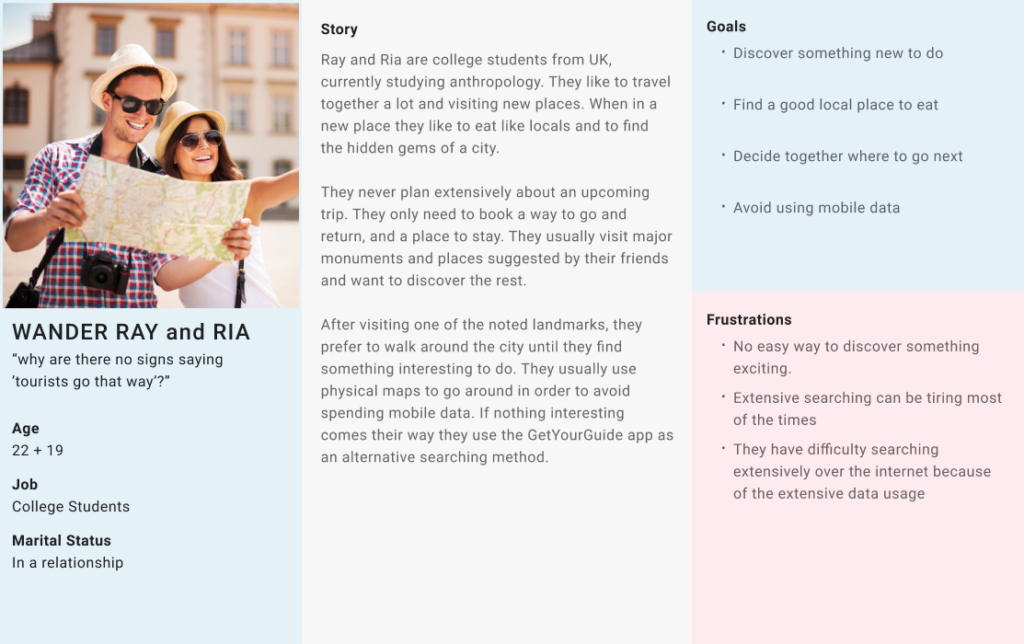
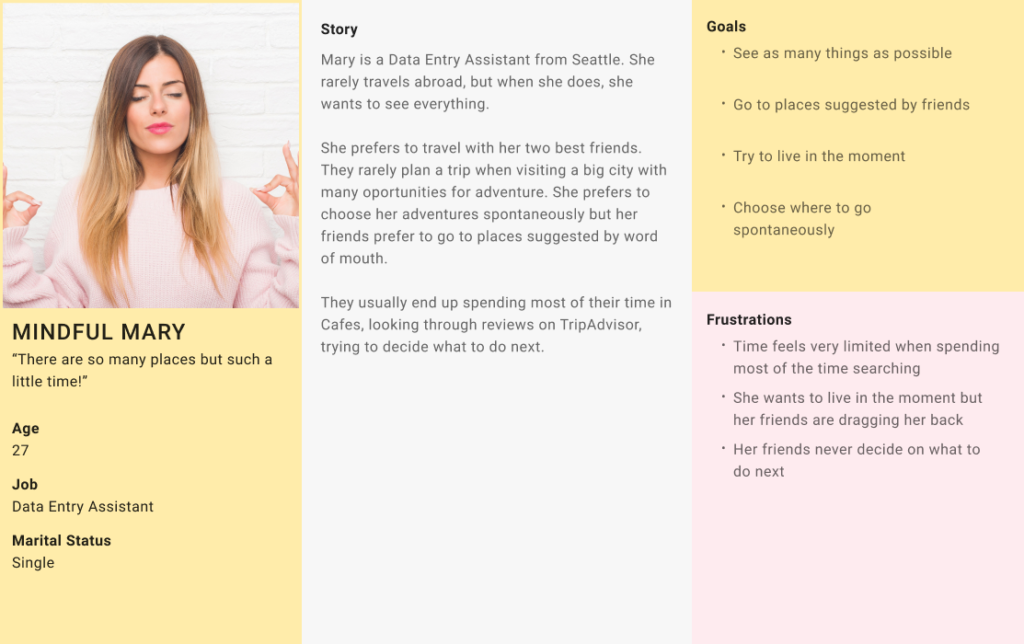
Define the Challenge
- Due to the variation in preferences and moods, decision making can become tiresome.
- Some people trying to get the upper hand in planning can cause tension in the group.
- Existing apps, with lists of nearby places and reviews, are being used but they require spending a lot of time and ultimately tiring the group due to the number of results. (Hick’s law in action)
- Searching for hours on an app needs data, thus, tourists preferred to go to a place with Wi-Fi and spend some time there until they find their next traveling experience.
- Some groups prefer to avoid apps and just walk around until they discover something interesting. They state that this feels spontaneous and adventurous but ultimately they feel they lose a lot of time.
Ideate
We used rapid sketch prototyping to generate various and diverse ideas as a group. This allowed us to rapidly iterate and fail fast by quickly going through multiple options. We evaluated each solution and we concluded that one of the ideas I had could have a positive effect in both decision making and time spent.
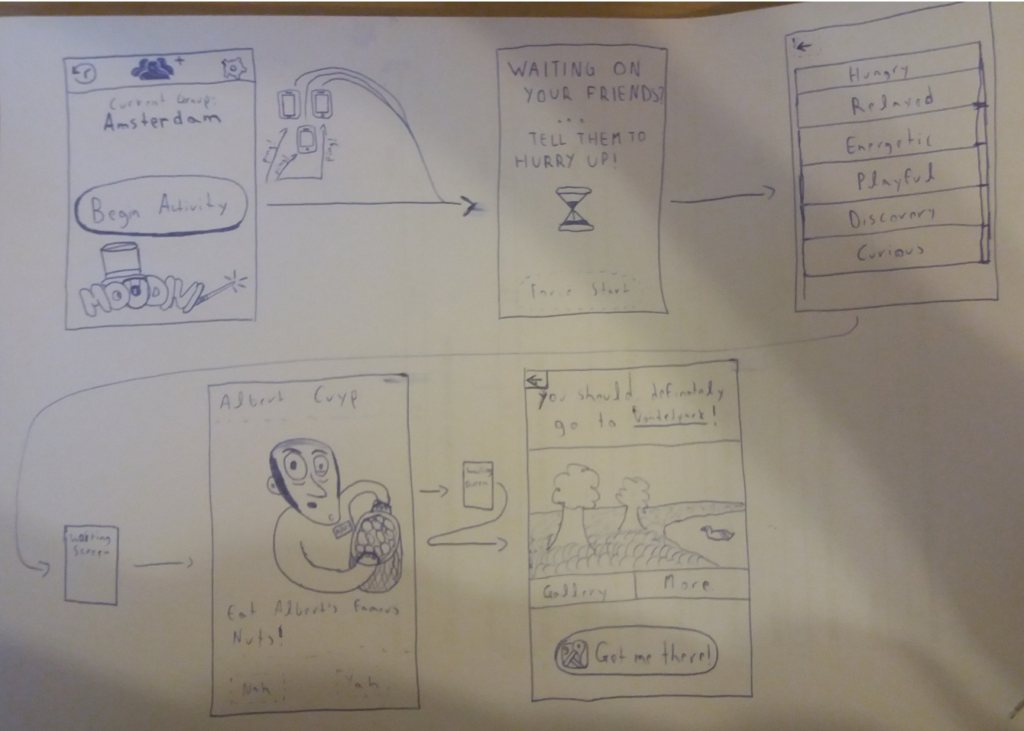
The idea revolted around the collective feelings of the group and suggested relevant places, spending no more than a few minutes, the group could quickly select their next experience. I suggested the app name Moodini because like Houdini it’s all about magically getting out of a difficult situation.
Prototype, Test and Evaluate
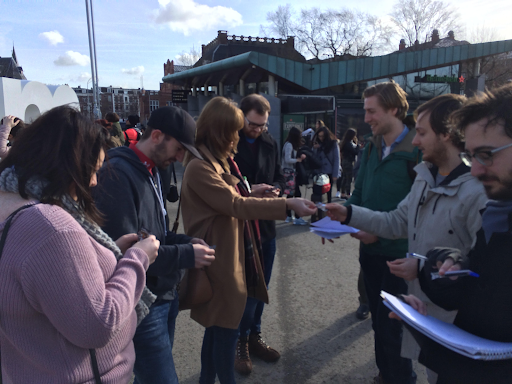
To get more confident results we conducted the testing outside of Rijksmuseum, one of the main attractions in Amsterdam. That allowed us to screen our participants and ensure that all groups had just exited the museum and had no idea where to go next.
Based on the feedback we received we adjusted our solution and went on creating a higher fidelity prototype that could be tested on mobiles. I worked on adjusting the feelings and recommendations and together with Pasquale and Willem we worked in designing and developing the high fidelity prototype.
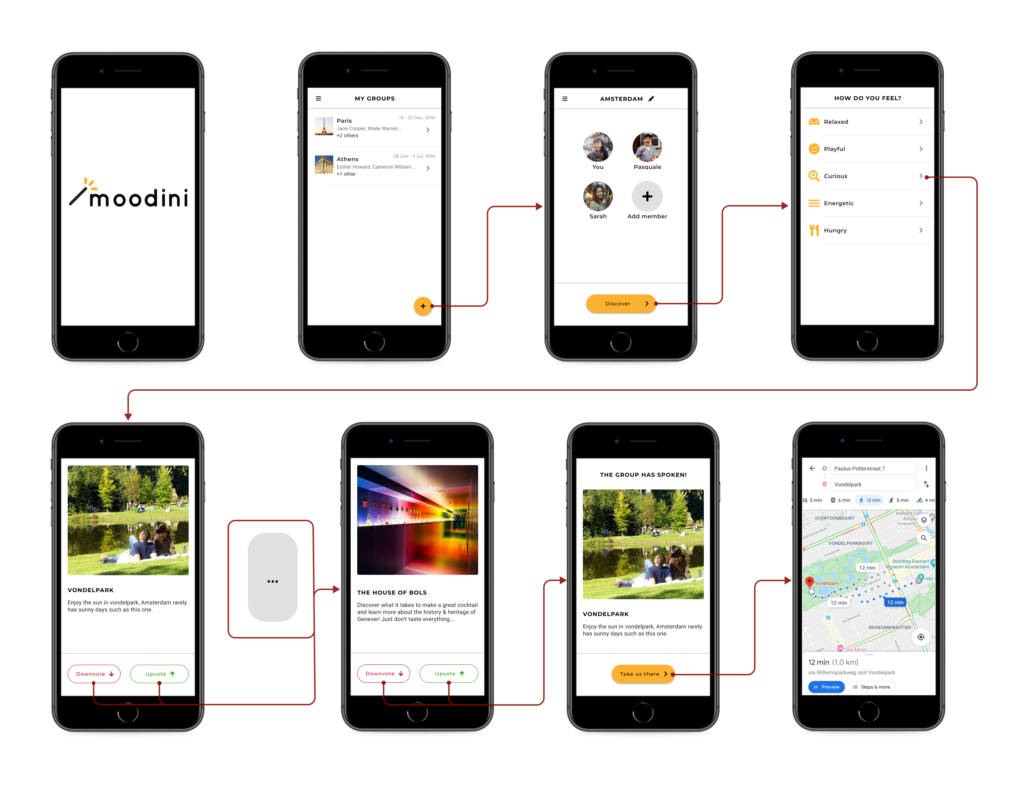
As part of a team effort, we conducted 6 additional guerrilla usability tests with tourist groups from various countries, outside of Rijksmuseum. Overall, the testing validated our assumptions, except some details. Participants characterized the application as convenient, fun, quick and helpful and asked us with directions on how to get to the place suggested, since the prototype maps were not providing real data.
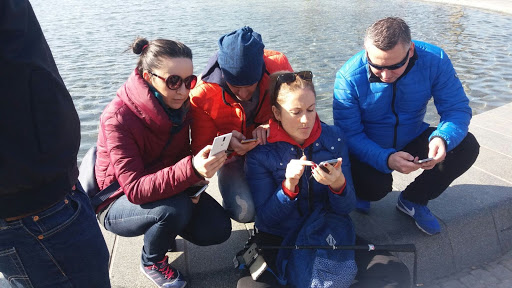
Conclusion
The conceptualization of Moodini was one of my favorite projects, however it became clear to me that the testing and evolution of a digital product never stops. We asked questions about our assumptions and we received answers, however, we also received different challenges. How could we let tourists know that there is an app for a similar problem to theirs? How might we tackle the cold start problem? How can we actually link effectively feelings with places? etc. etc.
The Design thinking framework helped me to stay focused and on track throughout the whole process. What we managed to achieve was to get an accurate glimpse of the future and how an application like Moodini could provide value to the struggles of tourist groups in Amsterdam, without spending resources beforehand.